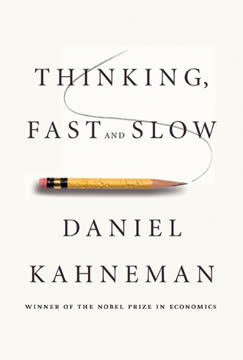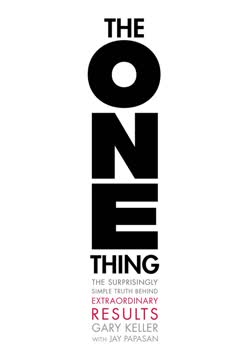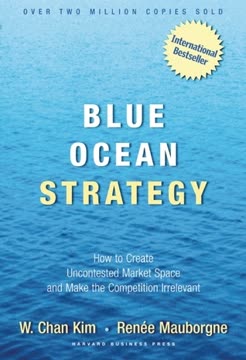Key Takeaways
1. The Old Brain: The True Decision-Maker
The old brain is well named, as it dates back to about 450 million years ago.
Three-part brain structure. The human brain consists of three distinct parts: the new brain (neocortex), the middle brain (limbic system), and the old brain (reptilian brain). While the new brain processes rational data and the middle brain handles emotions, it's the old brain that ultimately makes decisions. This primitive part of our brain is responsible for survival instincts and quick decision-making.
Evolution and decision-making. The old brain's primacy in decision-making stems from its long evolutionary history. It's focused on self-preservation and is highly responsive to visual stimuli, contrasts, and tangible input. Understanding this can revolutionize sales and marketing strategies, as it shifts the focus from purely logical arguments to techniques that resonate with this ancient decision-maker.
Implications for communication. To effectively influence decisions, messages must be tailored to reach the old brain. This means moving beyond words alone, which have limited impact on this primitive structure, and incorporating visual, emotional, and concrete elements that speak directly to the decision-making center.
2. Six Stimuli That Speak to the Old Brain
The old brain is responsive to anything pertaining to self.
- Self-Centeredness: The old brain prioritizes self-preservation and personal relevance.
- Contrast: Sharp distinctions help the old brain make quick decisions.
- Tangible Input: Concrete concepts are preferred over abstract ideas.
- Beginning and End: Information at the start and finish is most impactful.
- Visual Stimuli: The old brain processes images faster than words.
- Emotion: Strong feelings enhance memory and decision-making.
Applying the stimuli. Effective communication strategies should incorporate these six elements to resonate with the old brain. For example, using before-and-after scenarios creates contrast, while vivid imagery taps into the old brain's visual processing power. Emotional storytelling can make messages more memorable and impactful.
Tailoring messages. By focusing on how a product or idea benefits the individual (self-centeredness) and using concrete examples (tangible input), marketers can create messages that are more likely to trigger a response from the old brain, leading to faster and more favorable decisions.
3. Four Steps to Sell to the Old Brain
Pain, Claims, Gain, Old Brain!
- Diagnose the Pain: Identify and articulate the prospect's key problems or needs.
- Differentiate your Claims: Highlight what makes your solution unique.
- Demonstrate the Gain: Provide tangible proof of the benefits.
- Deliver to the Old Brain: Use techniques that speak directly to the decision-maker.
Pain-focused approach. By starting with a thorough diagnosis of the prospect's pain points, you align your message with their most pressing concerns. This creates immediate relevance and captures the old brain's attention.
Proof and delivery. Once claims are established, demonstrating gain through concrete evidence is crucial. This could involve customer testimonials, demonstrations, or compelling data. The final step involves packaging this information in a way that resonates with the old brain, using visual, emotional, and contrast-rich techniques to ensure the message is received and acted upon.
4. Grabbers: Capturing Attention Instantly
If you grab attention in the first frame with a visual surprise, you stand a better chance of holding the viewer.
Types of grabbers:
- Mini-dramas
- Wordplays
- Rhetorical questions
- Props
- Stories
Importance of first impressions. The old brain is most alert at the beginning of interactions, making the opening moments crucial for capturing attention. A strong grabber can set the tone for the entire presentation or message.
Crafting effective grabbers. The best grabbers are often unexpected, emotionally engaging, and directly relevant to the audience's pain points. For example, a mini-drama that vividly illustrates a prospect's problem can immediately draw them in and create a receptive mindset for your solution. Props and stories can make abstract concepts tangible, speaking directly to the old brain's preference for concrete information.
5. The Power of Visual Communication
A picture is worth a thousand words.
Visual processing speed. The old brain processes visual information 40 times faster than auditory input. This makes visual communication a powerful tool for reaching the decision-making center of the brain quickly and effectively.
Big picture concept. Creating a "big picture" – a visual representation of how your solution impacts the prospect's world – can dramatically enhance understanding and retention. Effective big pictures:
- Reflect the prospect's world, not just your product
- Use real visuals, not just diagrams or text
- Often employ contrast to show before/after scenarios
Incorporating visuals. In presentations, marketing materials, and even conversations, finding ways to visualize concepts can significantly boost their impact on the old brain. This could involve using props, creating vivid mental images through storytelling, or employing striking visual aids that directly illustrate the pain and gain relevant to your audience.
6. Crafting Compelling Claims and Proofs
Price is what you pay. Value is what you get.
Effective claims:
- Short and memorable
- Relevant to the prospect's pain
- Unique to your solution
Hierarchy of proof:
- Customer stories (80-100% proof)
- Demonstrations (60-100% proof)
- Data (20-60% proof)
- Vision (10-40% proof)
Balancing claims and proof. While strong claims capture attention, they must be backed by compelling evidence to convince the old brain. Customer stories are particularly powerful as they provide tangible, relatable proof of your solution's effectiveness. When crafting your message, aim to have at least one solid piece of evidence for each claim, preferably from the higher end of the proof hierarchy.
7. Boosting Impact Through Emotion and Stories
The old brain cannot tell the difference between reality and a well-told story.
Emotional memory. Strong emotions act as memory-makers, creating vivid and lasting impressions. This is why people often remember exactly where they were during significant emotional events, even years later.
Power of storytelling. Stories are uniquely effective at reaching the old brain because they:
- Create a world of sensory impressions
- Engage multiple learning channels (visual, auditory, kinesthetic)
- Evoke emotions that enhance memory and decision-making
- Can make abstract concepts concrete and relatable
Crafting impactful stories. To maximize the effect of storytelling:
- Make it personal and relevant to your audience
- Include sensory details to create a vivid experience
- Ensure there's a clear point or lesson that ties back to your main message
- Practice delivery to enhance credibility and emotional impact
8. Addressing Different Learning Styles
Make yours more visual and kinesthetic.
Three learning channels:
- Visual (40% of people)
- Auditory (20% of people)
- Kinesthetic (40% of people)
Balanced communication. Most business presentations primarily use the auditory channel, potentially missing a significant portion of the audience. To reach all types of learners:
- Incorporate strong visuals (not just text-heavy slides)
- Use props or demonstrations for kinesthetic appeal
- Tell stories that engage all senses
- Vary your language to include visual, auditory, and kinesthetic words
Enhancing retention. By addressing all learning styles, you increase the chances of your message being understood, remembered, and acted upon. This multi-channel approach also helps keep the old brain engaged throughout your communication.
9. The Art of Handling Objections
An objection is not a rejection; it is simply a request for more information.
Two types of objections:
- Misunderstandings
- Valid objections
Handling misunderstandings:
- Restate the objection
- Step into the objection (move towards the person)
- Hear your prospect out
- Deliver the proof
Addressing valid objections:
- Restate the objection
- Step into the objection
- Wait for feedback
- State your personal opinion
- Present a positive side to the objection
Reframing technique. For valid objections, the key is often to reframe the issue, presenting a new perspective that aligns with the old brain's decision-making process. For example, if price is an objection, reframe it in terms of value or long-term savings. Using stories or analogies can be particularly effective in this reframing process, as they engage the old brain's preference for tangible, relatable information.
10. Closing Techniques for the Old Brain
Repeat your claims and then get positive public feedback to close.
Effective closing steps:
- Repeat your claims one final time
- Ask for positive public feedback: "What do you think?"
- Ask for the next step: "Where do we go from here?"
Law of Consistency. When people make a small commitment (like giving positive feedback), they're more likely to follow through with larger commitments later. This psychological principle makes the "What do you think?" question particularly powerful.
Allowing prospect commitment. By asking open-ended questions about next steps, you allow the prospect to suggest and commit to future actions. This commitment is more powerful than if you had suggested the steps yourself, as it taps into the old brain's self-centered nature and the Law of Consistency.
11. Less Is More: Simplifying Your Message
Telling does NOT equal selling.
Focused messaging. Instead of presenting all possible benefits, focus on the top one to three that address your prospect's primary pain points. The old brain prefers simplicity and clear choices.
Quality over quantity. Remove any information that doesn't directly contribute to the decision-making process. Ask yourself:
- Is this information necessary for understanding the big picture?
- Will this help my prospect make a buying decision?
- Does this pass the "So what?" test?
Impact of simplification. By streamlining your message:
- You respect your audience's time
- Your key points become more memorable
- You leave room for valuable discussion and feedback
- You demonstrate confidence in your core value proposition
Remember, the goal is to sell, not just to inform. By focusing on the essentials and delivering them in a way that resonates with the old brain, you increase your chances of influencing decisions and closing deals effectively.
Last updated:
FAQ
What's "Neuromarketing: Understanding the Buy Buttons in Your Customer's Brain" about?
- Exploration of Neuromarketing: The book delves into the concept of neuromarketing, which combines neuroscience with marketing to understand how consumers make buying decisions.
- Focus on the Old Brain: It emphasizes the role of the "old brain" or "reptilian brain" in decision-making, which is more influential than the rational "new brain."
- Sales and Marketing Techniques: The authors provide a framework for creating marketing messages that effectively target the old brain to increase sales effectiveness.
- Practical Applications: The book offers practical advice and methodologies for sales and marketing professionals to apply neuromarketing principles in their strategies.
Why should I read "Neuromarketing: Understanding the Buy Buttons in Your Customer's Brain"?
- Innovative Approach: It introduces a novel approach to marketing that leverages the latest findings in neuroscience.
- Improved Sales Effectiveness: By understanding the decision-making process, readers can enhance their ability to influence and persuade customers.
- Comprehensive Framework: The book provides a structured methodology that can be applied across various marketing and sales scenarios.
- Real-World Examples: It includes numerous examples and case studies that illustrate the application of neuromarketing principles in real business contexts.
What are the key takeaways of "Neuromarketing: Understanding the Buy Buttons in Your Customer's Brain"?
- Three Brains Concept: The book explains the interaction between the old brain, middle brain, and new brain, highlighting the old brain's role in decision-making.
- Six Stimuli for the Old Brain: It identifies six stimuli that effectively communicate with the old brain: self-centeredness, contrast, tangible input, beginning and end, visual stimuli, and emotion.
- Four-Step Methodology: The authors propose a four-step process: Diagnose the Pain, Differentiate Your Claims, Demonstrate the Gain, and Deliver to the Old Brain.
- Impact Boosters: The book outlines seven impact boosters to enhance message delivery, including using "you" language, credibility, contrast, and emotion.
How does the "Three Brains, One Decision-Maker" concept work in the book?
- Three Distinct Parts: The brain is divided into the new brain (rational thinking), middle brain (emotions), and old brain (decision-making).
- Old Brain's Dominance: The old brain is the primary decision-maker, often overriding the rational new brain in decision-making processes.
- Survival Focus: The old brain is concerned with survival and is self-centered, making it crucial to address its needs in marketing messages.
- Interaction with Other Brains: While the old brain makes the final decision, it considers input from the new and middle brains.
What are the "Six Stimuli that Speak to the Old Brain" according to the book?
- Self-Centeredness: The old brain is focused on self-preservation and responds to messages that directly relate to its own well-being.
- Contrast: It is sensitive to clear contrasts, such as before/after scenarios, which help it make quick decisions.
- Tangible Input: The old brain prefers concrete, simple information over abstract concepts.
- Visual Stimuli: Visual input is processed faster than auditory input, making it a powerful tool for influencing the old brain.
Can you explain the "Four Steps to Success" methodology in the book?
- Step 1 - Diagnose the Pain: Identify and understand the primary pain points of your prospects to tailor your message effectively.
- Step 2 - Differentiate Your Claims: Highlight what makes your product or service unique and how it addresses the identified pain.
- Step 3 - Demonstrate the Gain: Provide tangible proof of the benefits and value your solution offers to the prospect.
- Step 4 - Deliver to the Old Brain: Use the six stimuli to craft messages that resonate with the old brain, ensuring maximum impact.
What are some practical applications of neuromarketing from the book?
- Sales Presentations: Use the four-step methodology to structure sales presentations that effectively address the old brain's needs.
- Advertising Strategies: Design ads that incorporate visual stimuli and contrast to capture the old brain's attention.
- Customer Engagement: Craft marketing messages that focus on the customer's pain and demonstrate clear, tangible benefits.
- Product Positioning: Differentiate products by emphasizing unique claims that align with the old brain's decision-making criteria.
How does the book suggest handling objections in sales?
- Misunderstandings vs. Valid Objections: Differentiate between objections based on misunderstandings and those that are valid concerns.
- Restate and Address: Restate the objection to ensure understanding, then address it with tangible proof or reframing.
- Use of Stories: Employ stories, analogies, or metaphors to reframe objections and highlight the positive aspects of the objection.
- Body Language: Maintain positive body language, such as moving toward the objector, to convey confidence and openness.
What are the "Seven Impact Boosters" mentioned in the book?
- Wording with "You": Personalize messages by using "you" to make them more relevant to the prospect.
- Credibility: Build trust through creativity, fearlessness, passion, integrity, similarity, and expressiveness.
- Contrast: Use sharp contrasts to help the old brain make decisions quickly and easily.
- Emotion: Generate emotions to create lasting memories and influence decision-making.
What are some of the best quotes from "Neuromarketing: Understanding the Buy Buttons in Your Customer's Brain" and what do they mean?
- "The old brain decides." This quote emphasizes the old brain's role as the primary decision-maker, highlighting the importance of targeting it in marketing.
- "We are not thinking machines that feel, we are feeling machines that think." This underscores the significance of emotions in decision-making, suggesting that emotions often drive rational thought.
- "No emotion, no decision." This quote reinforces the idea that emotions are crucial for triggering decisions, aligning with the book's focus on emotional marketing.
- "Less is more." This principle advocates for simplicity in messaging, ensuring that only essential information is communicated to the old brain.
How can "Neuromarketing: Understanding the Buy Buttons in Your Customer's Brain" help bridge the gap between sales and marketing?
- Common Language: The book provides a unified framework that both sales and marketing teams can use to align their strategies.
- Focus on Pain and Gain: By concentrating on diagnosing pain and demonstrating gain, both departments can work towards common goals.
- Shared Methodology: The four-step process offers a structured approach that can be applied across sales and marketing efforts.
- Enhanced Collaboration: Neuromarketing principles encourage collaboration between sales and marketing to create cohesive, effective messages.
What are some real-world examples of neuromarketing applications from the book?
- Domino's Pizza: The company identified customer pain related to delivery time anxiety and created the "Thirty minutes or less" guarantee.
- Avis Car Rental: Avis differentiated itself with the "We Try Harder" slogan, emphasizing superior service despite being second in market share.
- Panasonic Toughbook: A mini-drama ad demonstrated the durability of their laptops by depicting a dramatic drop scenario.
- Linux Presentation: A live demonstration contrasted the reliability of Linux with competitors, creating a memorable emotional experience for the audience.
Review Summary
Neuromarketing receives mixed reviews. Some readers find it insightful for understanding consumer psychology and improving sales techniques. Others criticize it as outdated, overly focused on sales rather than marketing, and lacking depth in neuroscience. Positive reviews praise its practical advice and accessible explanations of brain function in decision-making. Critics argue it's too basic for experienced marketers and doesn't deliver on its neuromarketing premise. The book's value seems to depend on the reader's background and expectations, with some finding it a useful introduction and others seeking more advanced content.
Similar Books










Download PDF
Download EPUB
.epub digital book format is ideal for reading ebooks on phones, tablets, and e-readers.




